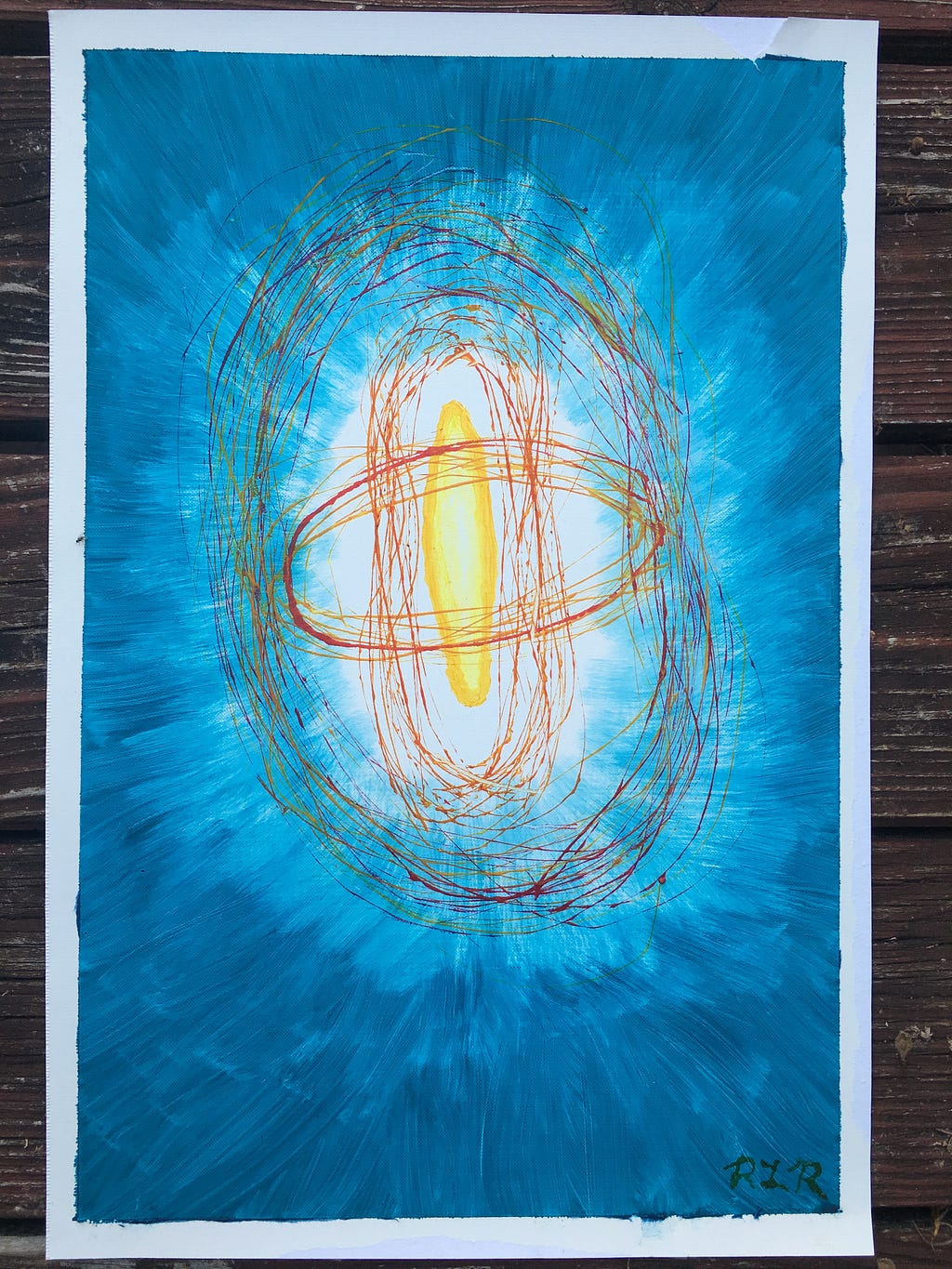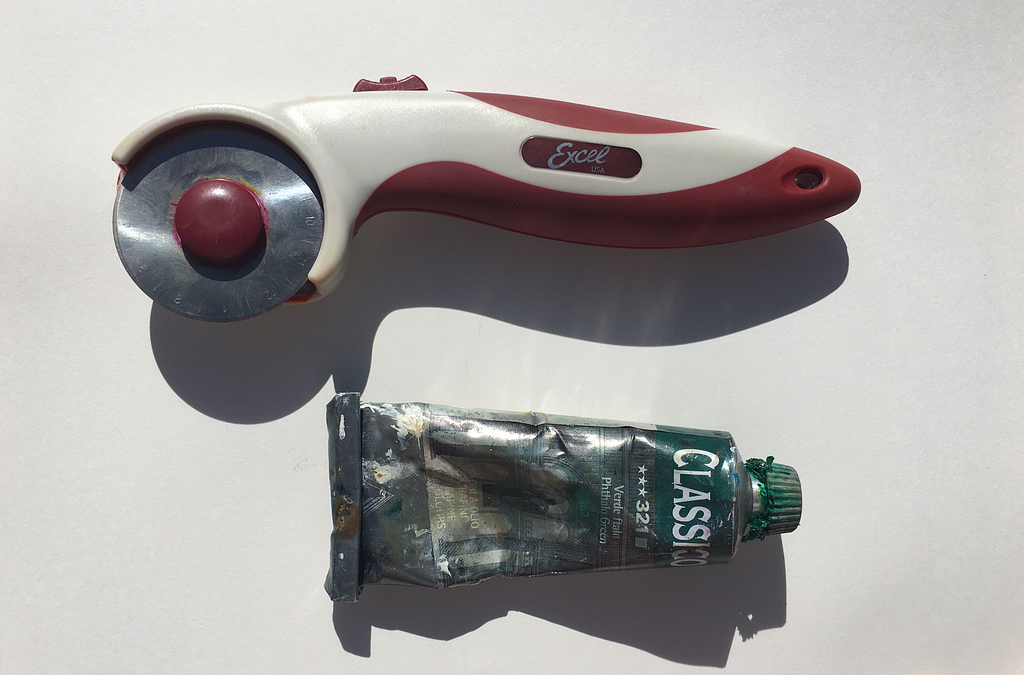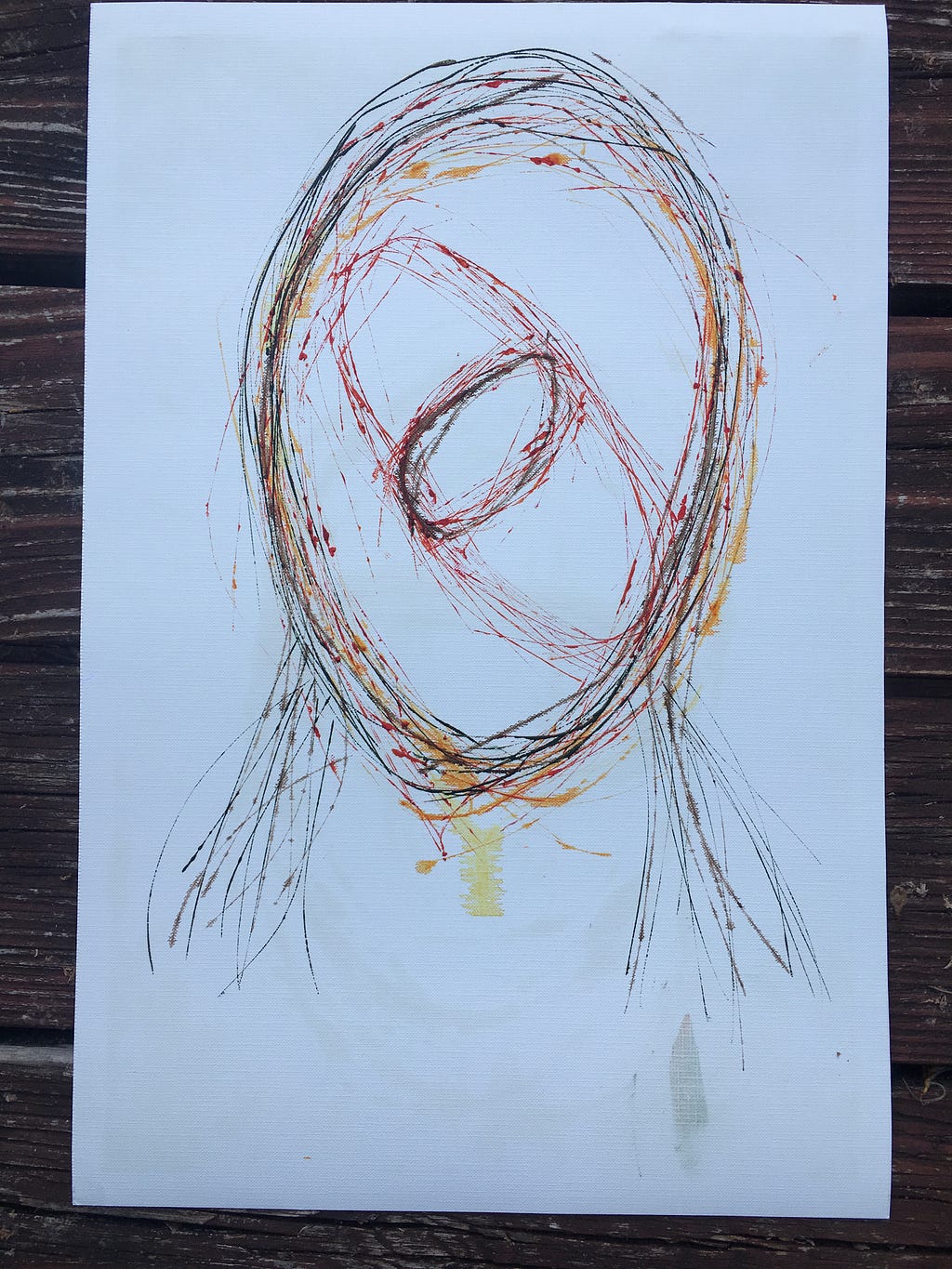Latest news about Bitcoin and all cryptocurrencies. Your daily crypto news habit.
 “Oyarsa”, by Robert L. Read
“Oyarsa”, by Robert L. Read
I probably should not have taken up oil painting; I have always admired art done with pen-and-ink, which produces very thin, precise lines.
It is possible to make thin lines with oil paint, but it is difficult. One must either have a terribly steady hand with a very fine brush, or use a ruling pen, which are themselves tricky and require very thin paint.
Following some other artists, I bought a cutting wheel, and used it to make the painting “Oyarsa” above, an attempt to depict the archangel, or genius locii, of Malacandra, from C.S. Lewis’s Space Trilogy. I jammed a wad of cotton against the wheel in the handle, to make the loading of the wheel with paint last a little longer. I put paint in a little tray, and loaded the wheel by rolling it back and forth. I could make about two of the large ovals with one paint loading. The effectiveness of this technique, overall, was marginal.
 The cutting wheel used to make the above painting, and tube of oil paint.
The cutting wheel used to make the above painting, and tube of oil paint.
This is why I created Public Invention Project #40, “Oil Painting Wheel for Very Thin Lines.” The idea is to build a better oil painting wheel that makes it easier to make “thin line” paintings. Public Invention is a non-profit whose motto is “Invent in the Public, for the Public.” We seek to invent things for all to share by connecting inventors with coaches (like me) and providing moral and technical support. Everything Public Invention does is free-libre open source, and everything we do is real.
This is one of our easier projects. Some of the others are multi-year, PhD level research efforts. This one could be helped by anyone, including artists, painters, writers, photographers, 3D printing specialist, mechanical engineers, and maybe more talents I can’t think of.
There is no substitute for personal interaction; if you are interested in this project, please contact me at <read.robert@gmail.com>. Public Invention is about collaboration — it offers coaching, team-formation and sometimes material support. Until a team forms around this idea to do brainstorming, as the initial coach, here is what I would suggest:
- Cutting wheels that are sharp and made of metal seem like a good idea, but actually a safer wheel what held the paint better than a knife’s edge might actually allow a better line. Such a wheel could be 3D printed, or made by sandwiching materials together.
- I would not recommend attempting to mix colors on the same wheel, but it would be nice if the wheel was easier to “load” with paint. This could be a simple as board with “loading grooves”, or a handle that held a small amount of paint which reloaded the wheel by wicking action (via felt or cotton.)
- This project has to “feel” right. It can’t be done by an inventor alone who doesn’t paint. We need painters, or at least crafty artists, to test the device prototypes on an ongoing basis. Human-centered design is really always needed, but some projects, such as building a more efficient motor, can keep the user at arm’s length. Not so a painting wheel!
Public Invention is a new organization and an even newer movement. We seek to bring about a bright, optimistic future by democratizing invention. Let me explain what I hope happens — think of this as a prayer, if you like.
A painter will email me and I’ll have a video chat with them and mail my cutting wheel to them, and they can try making some sketches, and provide feedback, which I help them publish on the web for all to see. Meanwhile, a mechanically minded inventor will email me about making a better painting wheel. I will connect them with the artist to form an invention team. The inventor will make five or six prototype wheels, and the artist will try out all of them. Perhaps then the inventor will work on decreasing the loading time. Perhaps the team will work on improving the quality of the line. Perhaps they will work on a way to use the wheel against a French curve or a ruler that doesn’t touch the wet paint. Everything they do will be documented in pictures, video and writing for all to see. Eventually, they will write up a report of their experiences, which will be “published” on the web and perhaps in a magazine to make it as durable and widely available as possible. They will receive nothing but our thanks and having their name forever recorded as public inventors on this project.
And some young people who aren’t ready to master a ruling pen will have an easier way to make art. Some artists will be able to create beautiful, complex works faster than before, and so they will make more and better art.
Public Invention Project #40: A Wheel for Painting Very Thin Lines was originally published in Hacker Noon on Medium, where people are continuing the conversation by highlighting and responding to this story.
Disclaimer
The views and opinions expressed in this article are solely those of the authors and do not reflect the views of Bitcoin Insider. Every investment and trading move involves risk - this is especially true for cryptocurrencies given their volatility. We strongly advise our readers to conduct their own research when making a decision.
